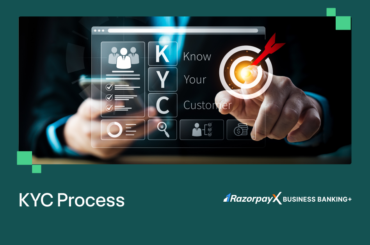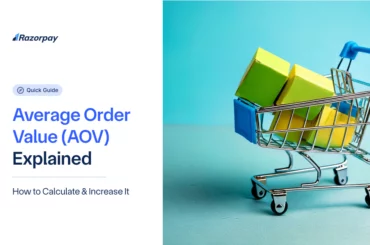As of 2022, India is the second-largest Internet market in the world. A report by Invest India says nearly 100% of all pin codes in India are accessible by e-commerce marketplaces.
How did e-commerce become the norm?
Table of Contents
What is an Online Marketplace?
An online marketplace, or an e-commerce marketplace, is a platform that connects buyers and sellers. Think Amazon, Myntra or Flipkart – these businesses don’t own any products or maintain inventory. They provide the infrastructure for third-party businesses to list their products or services and reach a wider audience.
The marketplace also provides assistance to these businesses in the form of credit, marketing tools and infrastructural support. Let’s look at a few benefits of selling on an e-commerce marketplace.
Benefits of E-Commerce Marketplaces
Promotion by proxy
Online marketplaces help with marketing and promotion tools for small businesses that may be unable to afford expensive advertising. Amazon, for example, has promotional tactics like the Great Indian Festival.
Payment processing
One of the biggest challenges to setting up an online marketplace is establishing payment infrastructure. Thanks to payment gateways like Razorpay and business banking solutions like RazorpayX, this process has become easier. However, most businesses would still benefit greatly from listing their products on an online marketplace that would manage all necessary infrastructure.
Goodwill and trust
Customers who would otherwise not trust a small, unknown brand are more likely to purchase from this small brand if listed on a trusted e-commerce marketplace. This transferred trust allows small businesses to build reliability and an audience much more easily.
Related Read: What Is E-Commerce Marketing? Types, Strategies & Tips
Types of Online Marketplaces
Horizontal & Vertical Marketplaces
Amazon and Flipkart are examples of online marketplaces – they offer a wide range of goods across categories. Clothes, food, electronics, furniture – these horizontal marketplaces offer practically everything you can think of. They are the digital versions of mega-supermarkets like Star Bazaar or Walmart.
Vertical marketplaces specialize in one or two categories. Think Lenskart or Myntra – these marketplaces only sell eyewear and clothing or accessories. You wouldn’t find clothes on Lenskart, or electronics on Myntra.
B2B & B2C Marketplaces
B2B marketplaces allow businesses to list their goods and services to other businesses. These marketplaces don’t enjoy the commercial popularity of B2C marketplaces, but still play a very important role in the economy. A few examples are the government-funded MSME Global Mart and Amazon Business.
B2C marketplaces are the ones everyone knows – they allow businesses to list their goods and services to the final consumer. Some examples are Myntra, BookMyShow and Nykaa.
A similar type of marketplace is the D2C marketplace – where a business creates an online platform to directly supply goods and services to its consumers instead of tying up with a third party e-commerce marketplace.
Related Read: What is B2C E-commerce? Examples, Types of Models and Benefits
Peer to Peer (P2P) Marketplaces
The best example of a peer-to-peer marketplace is Airbnb. These platforms are like the classifieds section of a newspaper – they connect an individual with a good or service to an individual who needs that good or service.
Used car marketplaces are also great examples of P2P marketplaces.
Related Read: What Is C2B eCommerce?
Trends in Online Marketplaces in India
As the number of internet users in India increases, so does the potential for growth in the e-commerce marketplace industry. Mobile apps like Blinkit, Dunzo and Nykaa are contributing immensely to this growth and adoption – thanks to these players, the demand for e-commerce marketplaces is not going anywhere any time soon.
A major contributory factor to this growth is governmental support like the Digital India campaign. Since 2016, the government has allowed 100% foreign investment in B2B marketplaces through the automatic route – this encourages foreign players to invest in Indian marketplaces.
India has the cheapest internet in the world – and smartphones are quickly getting more affordable; an entire population of educated, urban youth are primed for online retail.
If you own an online marketplace in India, you’re set for success. According to the India Brand Equity Foundation, online retail penetration will reach 10.7% in 2024, up from only 4.7% in 2019.
This multi-fold growth is only set to continue with the rise of tech like virtual reality, which allows consumers to virtually “try on” clothes and accessories – you can even see how furniture would look like in your home before deciding to make the purchase!
Challenges Faced by Online Marketplaces
E-commerce marketplaces deal with a unique set of challenges.
The first and most important is vendor management. Since online marketplaces only list the goods and services of third-party vendors, they are liable to pay the vendors the money they collect from the buyers.
Unless automated and regulated, these payments can become very difficult to manage. Another issue is trust – as an intermediary in the transaction, the marketplace has to ensure utmost transparency and trust on both the buyer’s and seller’s sides.
With RazorpayX Escrow+, these complex transactions become simple and seamless.




